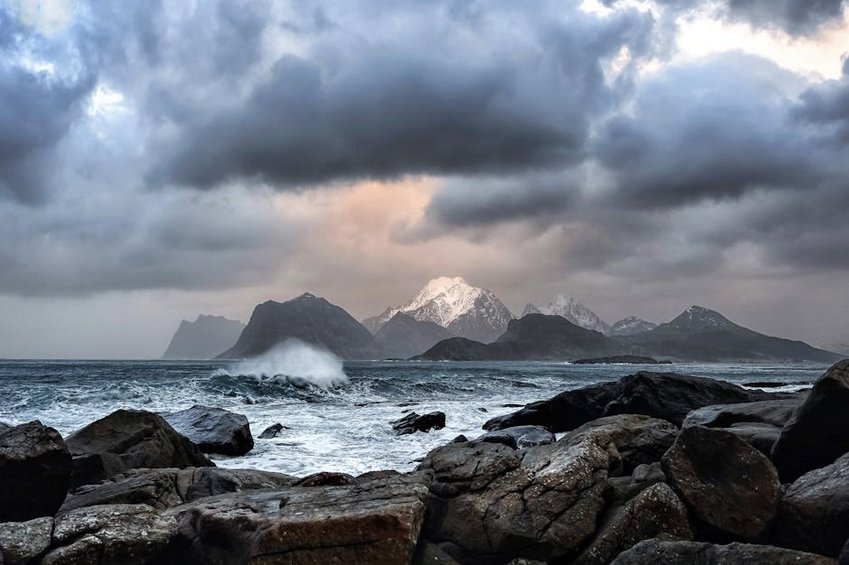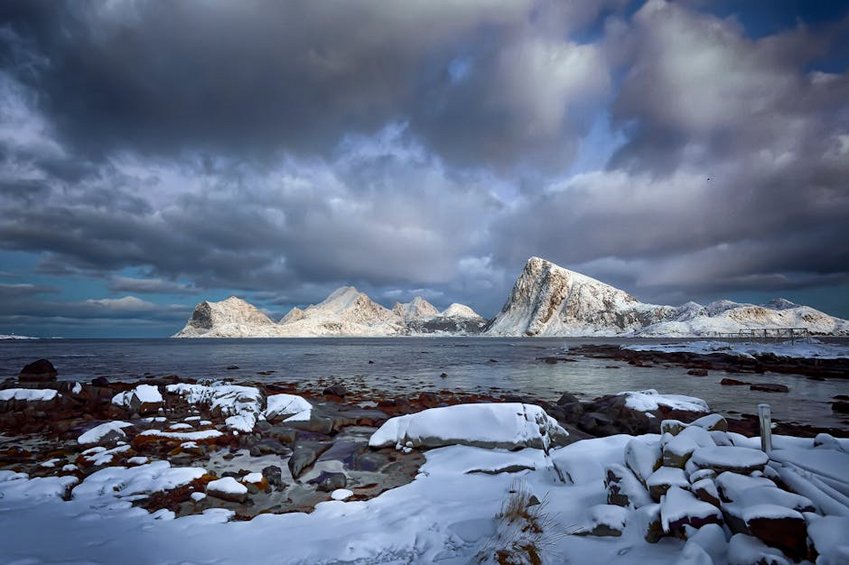Faroe Islands Winter Storm Watching: Epic Coastal Adventure
Faroe Islands winter storm watching combines dramatic North Atlantic weather with breathtaking coastal landscapes for an unforgettable adventure. This unique experience offers powerful waves crashing against steep cliffs under moody skies, creating perfect conditions for photography and nature immersion. Our guide covers essential planning, safety protocols, seasonal timing, and hidden locations to maximize your storm watching journey.
Essential Storm Watching Information
The Faroe Islands experience some of Europe’s most intense winter weather systems between November and March. These autonomous Danish territories sit in the North Atlantic Ocean, approximately halfway between Iceland and Norway. Winter temperatures typically range from 35°F to 45°F (2°C to 7°C) with frequent precipitation and strong winds.
Storm watching differs from typical tourism by focusing on weather events rather than avoiding them. The islands’ volcanic geology creates dramatic backdrops where Atlantic storms unleash their full power. This adventure requires careful preparation and respect for nature’s forces.
What Makes Faroe Storm Watching Unique
Several factors distinguish Faroe Islands storm watching from other destinations.
- The archipelago’s location in the North Atlantic places it directly in the path of powerful low-pressure systems that generate spectacular wave action against coastal cliffs.
- Unique geological formations like sea stacks and natural arches amplify wave dynamics, creating explosive water displays during storm conditions.
- The islands’ small population and limited light pollution enhance the atmospheric experience, with dramatic cloud formations and occasional aurora sightings.
- Budget travelers can manage with $80-120 daily using hostels, self-catering, and public transport, focusing on accessible viewpoints without guided tours.
- Mid-range options at $150-250 daily include comfortable hotels, rental cars, and occasional guided experiences for accessing restricted areas safely.
- Luxury experiences costing $300-500+ daily feature specialized storm watching tours, premium accommodations, and photography workshops with expert guidance.
- Visit Faroe Islands Official Tourism Site
- Icelandic Meteorological Office
Historical and Cultural Context
Faroe Islanders have lived with these weather conditions for over a thousand years since Norse settlement. The challenging climate shaped their culture, architecture, and relationship with the sea. Traditional grass-roofed houses demonstrate adaptation to harsh conditions.
Modern storm watching respects this heritage while providing new economic opportunities during the quieter winter months. Local guides share generations of weather knowledge that enhances safety and experience quality.
Key Weather Patterns and Safety
Understanding Faroese weather is crucial for successful storm watching. Low-pressure systems typically approach from the southwest, bringing the most intense conditions. Weather can change rapidly within hours, requiring flexible itineraries.
Always check the official Faroe Islands weather service before heading out. Sudden wind shifts or rising tides can create dangerous situations near coastal areas. Local guides provide invaluable expertise for navigating these dynamic conditions safely.

Alt: “faroe-islands-winter-storm-coastal-cliffs-waves”
Faroe Islands Winter Storm Watching – Planning Your Trip
Proper planning transforms your Faroe Islands winter storm watching from potentially miserable to magnificently memorable. This adventure requires specific timing, equipment, and mindset adjustments compared to standard tourism. The islands’ infrastructure handles winter conditions well, but advance preparations ensure comfort and safety.
Booking key elements months ahead secures better prices and availability during peak storm season. Local tour operators fill quickly when major weather systems approach. Flexible travel dates increase your chances of witnessing spectacular atmospheric displays.
Best Time to Visit for Storm Watching
Visit between December and February for the most intense storm activity, with January typically delivering the strongest systems. These months see average temperatures of 37°F (3°C) and frequent gale-force winds exceeding 50 mph. Daylight remains limited to about 5-6 hours, creating dramatic lighting conditions.
Shoulder months of November and March offer more daylight (7-8 hours) with still-significant storm potential. February often provides the best balance of powerful weather and occasional clear periods for photography. Monitor long-range forecasts when planning specific dates.
Budget Planning and Costs
Storm watching budgets vary significantly based on accommodation style and guide services.
Essential Preparation Checklist
Proper gear makes the difference between miserable and magnificent storm watching. Waterproof jackets with taped seams, insulated layers, and waterproof pants are non-negotiable. Sturdy waterproof boots with grip soles prevent slips on wet rocks and paths.
Documentation includes valid passport (EU/US citizens need none for 90-day stays), comprehensive travel insurance covering weather disruptions, and emergency contact information. Book accommodations and rental vehicles 2-3 months ahead for best selection and pricing.
Top Storm Watching Locations and Activities
The Faroe Islands offer numerous spectacular vantage points for observing winter storms in their full glory. Coastal areas facing prevailing winds deliver the most dramatic displays, while inland valleys provide sheltered alternatives during extreme conditions. Local knowledge helps identify safe viewing positions relative to wind direction and tide conditions.
Accessibility varies by location, with some spots requiring short hikes and others accessible by vehicle. Always check current conditions and heed local advice about changing weather situations. The islands’ compact size enables moving between locations as storms develop.
Must-See Storm Watching Spots
Trælanípa (Slave Cliff) above Lake Sørvágsvatn offers breathtaking views of Atlantic waves crashing against vertical cliffs. The cliff face amplifies wave energy, creating spectacular spray plumes during storms. Access requires a 30-minute hike from the parking area.
Kallur Lighthouse on Kalsoy island provides iconic Faroese imagery with dramatic wave action against steep slopes. The journey involves ferry transport and a moderate hike, rewarding visitors with unparalleled views. Visit during rising tide for maximum wave intensity.
Gásadalur village and its famous waterfall present waves exploding through coastal openings during southerly storms. The viewpoint requires minimal walking from the parking area, making it accessible during various weather conditions. Morning light often creates stunning photographic opportunities.
Hidden Gems and Local Favorites
Saksun village’s enclosed tidal lagoon transforms during storms, with waves surging through the narrow entrance channel. The surrounding mountains create a natural amphitheater effect that amplifies sound and drama. Time your visit with high tide for the most impressive displays.
Tjørnuvík beach offers front-row seats to Atlantic swell meeting black sand shores. The village’s remote location ensures fewer visitors even during significant weather events. Local fishermen often share insights about approaching weather systems.
Funningur fjord provides sheltered storm watching with mountains framing dramatic cloud movements. The location works well during westerly winds when exposed coasts become too dangerous. The village church makes a compelling foreground element for photography.
Storm Photography Techniques
Successful storm photography requires balancing technical settings with safety considerations. Use weather-sealed camera equipment and protective covers to prevent moisture damage. Fast shutter speeds (1/500s or faster) freeze wave action, while slower speeds (1/15s) create motion blur effects.
Composition techniques include using coastal features as foreground elements and positioning against the wind direction for dramatic cloud movement. Polarizing filters reduce glare from wet surfaces and enhance color saturation. Always maintain safe distances from wave impact zones.
Practical Travel Information
Reaching the Faroe Islands involves flying into Vágar Airport (FAE) from several European hubs. Atlantic Airways and Scandinavian Airlines offer regular flights from Copenhagen, Edinburgh, and Reykjavik. Ferry options exist from Denmark and Iceland for those preferring sea travel.
Winter travel requires flexibility, as weather disruptions can affect both flights and ferry services. Allow extra days in your itinerary for potential delays. Rental cars provide the most flexibility for storm chasing, though public buses connect main towns reliably.
| Accommodation Type | Features and Considerations | Price Range (USD) |
|---|---|---|
| Hostels/Guesthouses | Basic amenities, shared facilities, central locations, budget-friendly | $70-120/night |
| Mid-Range Hotels | Private bathrooms, restaurants, parking, tour booking assistance | $150-250/night |
| Luxury Hotels | Premium locations, spas, fine dining, storm watching packages | $300-500+/night |
| Vacation Rentals | Self-catering, multiple bedrooms, local neighborhoods, weekly rates | $120-200/night |


